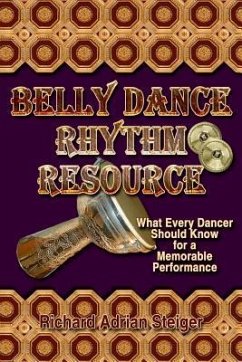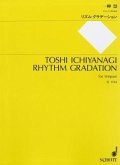"Belly" dance is an ancient art-form born of mysticism and ritual, evolved through the centuries to entertain and enthrall. The music of Le Danse Orientale is no less enchanting, transcending its ancient roots to encompass rhythms from not only the Near- and Middle-East, but Africa, Persia, India, Greece, Asia-Minor, the Balkans, and even Latin America. As belly dance evolves, alternative rhythms become more and more present in performance. Drummers use the drum-note melody as an iterative foundation upon which to elaborate, ornament, and to interact with the dancer. Dancers use the rhythm to guide the form of their movements. The elaborations and ornamentations are a dialog between drummer and dancer. The link between rhythm and motion is the heart of dance. The drummer brings time alive, and dancers bring motion to space. In the same way a musician who accompanies belly dance should be educated about the basics of movement and form, a dancer should know the names and structures of the rhythms to which she dances. It is the intent of these chapters to familiarize dancers with these rhythms, and to help dancers develop rhythmic skills. Belly dance rhythms can therefore be recognized by ear as simple repeating melodies constructed of primary drum-notes. The educated dancer needs to be able to-like the musician-instantly recognize and reproduce the basic pattern of the common rhythms, and ultimately to express coherent movement that transcends the mundane. This book seeks first-in Section I-to establish a strong foundation of musical basics, upon which may be built proficiency with the principle traditional rhythms of modern belly dance. Masmudi, Baladi, Maqsum, Fellahi, Sa'idi, Ayyub, Chiftetelli, Karshlama, and other standard danse orientale rhythms, should not be a mystery. Each chapter of Sections II and III of this book features a separate rhythm, including its origin, name, and context. Section IV will further explore specific folk and ethnic rhythms often integrated into modern belly dance, such as the Bolèro, Bandari, Chobiyyah, and Debke. Richard Adrian Steiger draws upon his extensive education in ethnomusicology to bring dancers into the rich world of belly dance music, in all its permutations. His exquisite sensitivity to the nuances of ethnic rhythms transcends ordinary understanding. In short, tightly-focused chapters, he is able to inform and inspire beginning and seasoned dancers alike. Let this work guide you through the multi-rhythmic world of belly dance music, enhance your training with expert advice and encouragement, and transform your performances into memorable events. I Music Fundamentals [rhythmic skills] 3 essentials/fundamental skills; drum shapes/acoustic; identification/tabla; frame drums; beat, cycle, and rhythm II Basic Rhythms [repertoire] Masmoudi (baladi, maqsum) [8: 4: 4], ayyub [2], malfuf [332], chiftetelli [8] III Complex Rhythms [odd meters] Karshlama [9], six [6], seven [7], five/ten [5, 10], eleven [11] IV Specialized Rhythms [ethnic/tribal] zar [2], fellahi [2], fezzani [2], khaliji [4], karachi [4], chobiyyah [4], bambi [4], debke [4], boléro [4] V Dance Music Analysis [ethnomusicological] Relationships [masmoudi family], rhythmic ambivalence, cross-rhythms, hidden rhythm [332 tresillo], notation visualization analysis, Raks Mustapha analysis of for, dancing to live drum solos, Zil composition, Dancer recitation of rhythms practice, trading rhythms form, the drum takht description, historical source of rhythms VI Summary and Review [summaries]
Hinweis: Dieser Artikel kann nur an eine deutsche Lieferadresse ausgeliefert werden.
Hinweis: Dieser Artikel kann nur an eine deutsche Lieferadresse ausgeliefert werden.




![Forget Me Not: A Collection of 50 Memorable Traditional Irish Tunes [With 2 CDs] Forget Me Not: A Collection of 50 Memorable Traditional Irish Tunes [With 2 CDs]](https://bilder.buecher.de/produkte/23/23412/23412735m.jpg)



